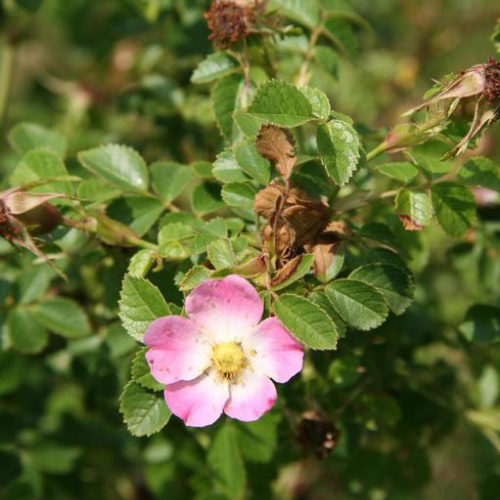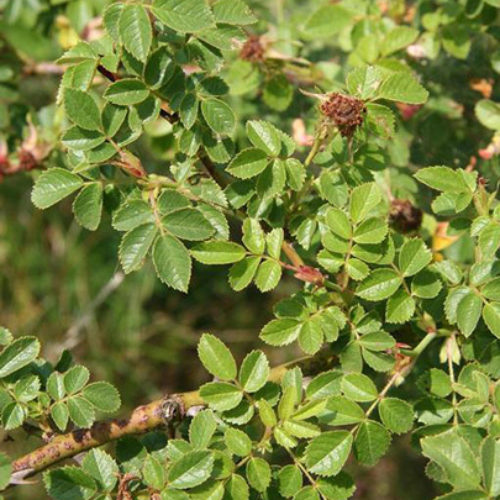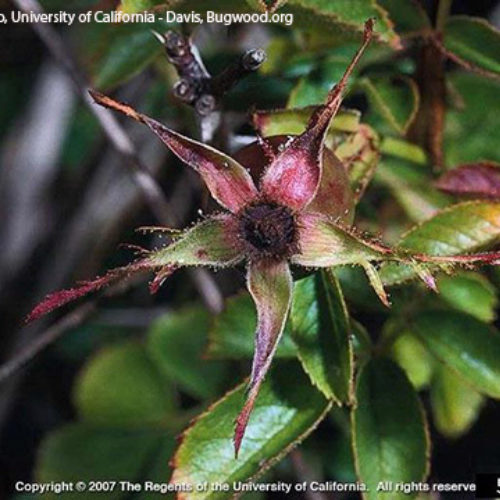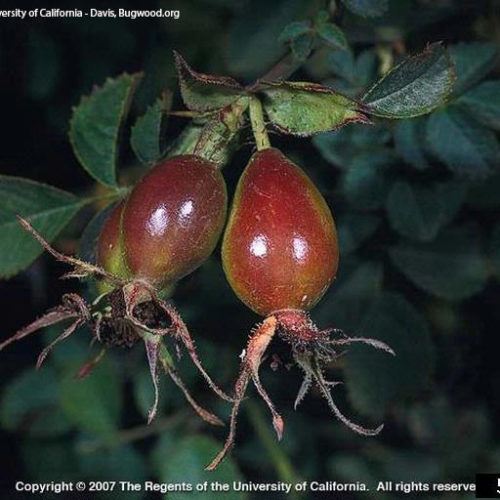Sweetbriar rose
Rosa rubiginosa
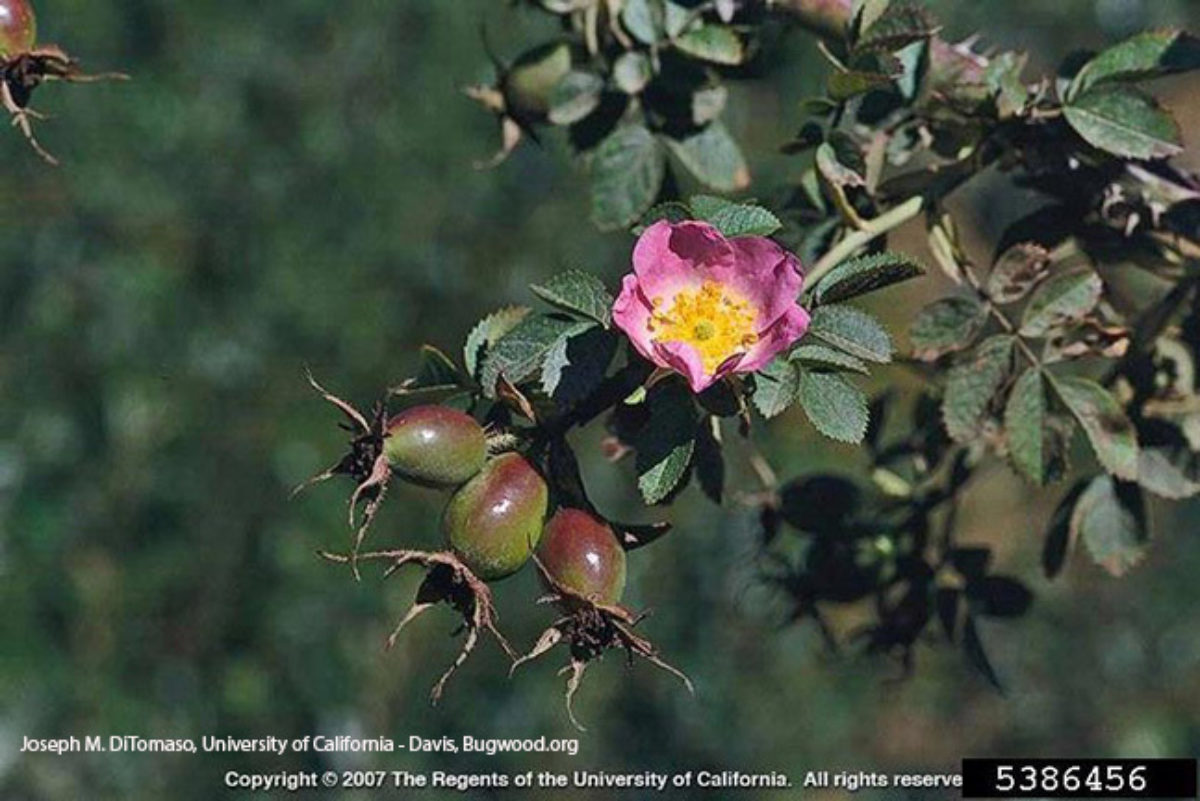
Family: Rosaceae
Other Scientific Names:
Rosa eglanteria
Other Common Names: eglantine rose
Weed class: monitor list
Year Listed: 2017
Native to: Europe and western Asia
Is this Weed Toxic?:
not known to be
Why Is It a Noxious Weed?
This plant is on the monitor list. Please contact the Washington State Noxious Weed Control Board to report location or for more information.
How would I identify it?
General Description
Vigorous shrubs, stems arching, growing 6.6 to 9.8 feet (2 to 3 meters) tall.
Flower Description
Flowers solitary or in panicles of 2-3, sometimes up to 7 flowers. Flowers are 0.8 to 1.6 inches (2-4 cm) wide, cupped, with five pale to dark pink petals.
Leaf description
Leaves alternately arranged, pinnately compound, having 5 to 7, sometimes 9 leaflets. Leaflets rounded to oval in shape, with gland-tipped, serrated margins. Leaves have an apple scent.
Stem description
Stems with stout, flattened, downward curving hooked prickles (thorns), unequal in size.
Fruit Seed Description
Fruits (hips) are scarlet-red, ovoid to spherical 1 to 2 cm (0.4 to 0.8 inches), smooth or with some glandular bristles at the base. The sepals have stalked glands, more or less spreading out, rarely reflexed, and are late to fall off.
May Be Confused With
Click here and see the table on page 5 for a comparison of some native and nonnative roses in the Pacific Northwest.
Where does it grow?
Plants are documented by herbarium records growing in Grant, Asotin, and Skagit counties as well as in the Sinlahekin Wildlife Area in Okanogan County.
How Does it Reproduce?
Seed spready by wildlife, root suckers
How Do I Control It?
Hand digging or heavy machinery can get out roots. Well established desired vegetation will out compete sweetbriar rose from invading. Sheep will eat seedlings, but cattle find it less palatable. Goats will eat adult and young plants. Foliar, basal bark, and cut stump herbicide treatments can be affective when following label directions and local regulations.
For More Information
WTU Herbarium information on sweetbriar rose



